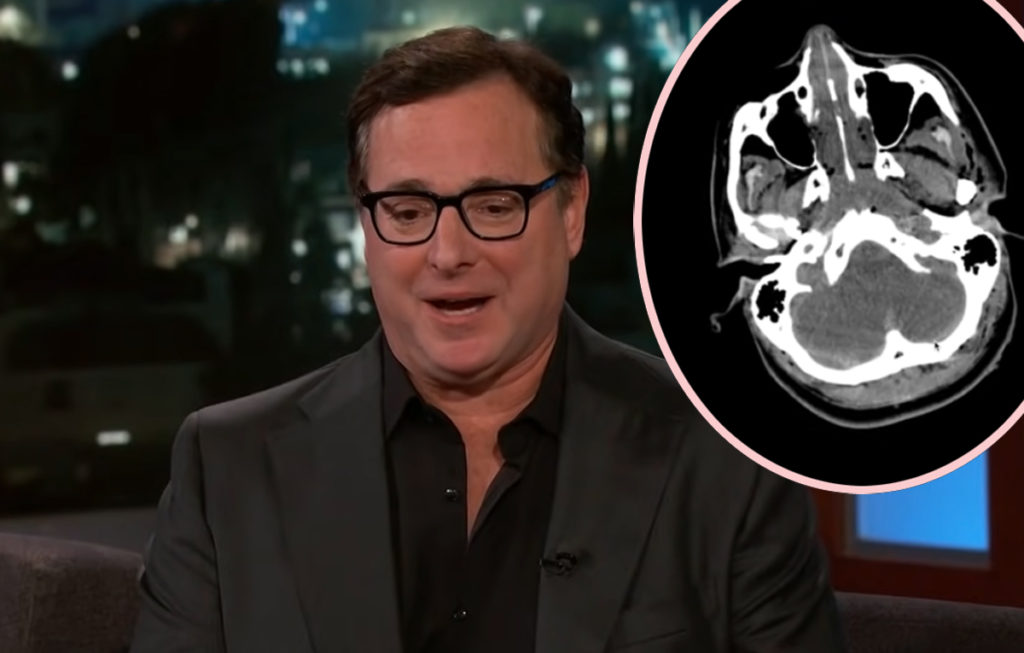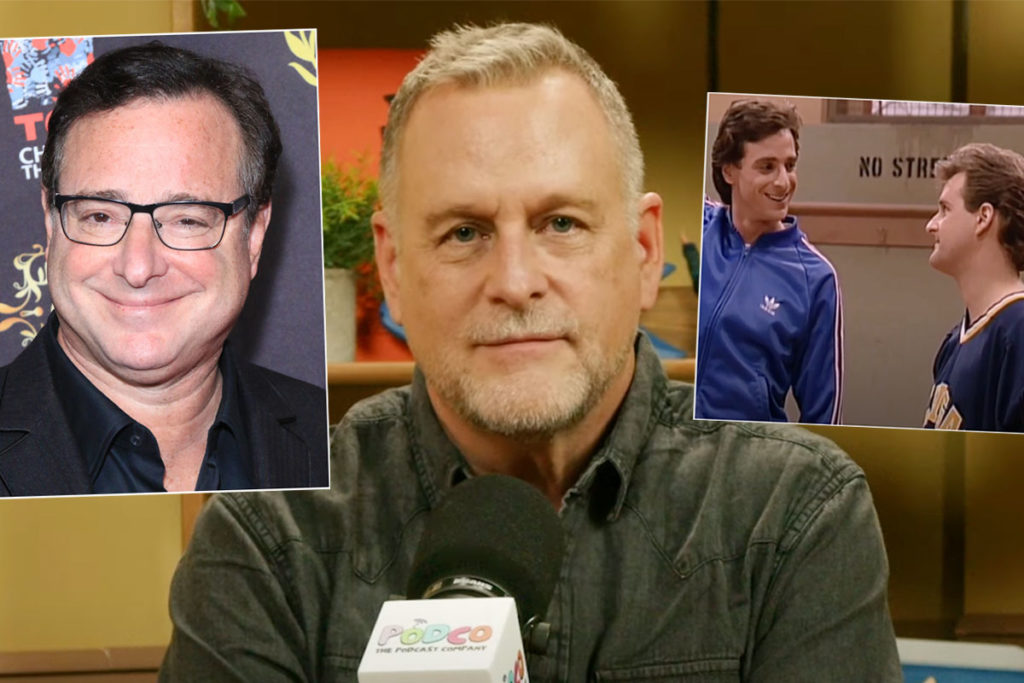When we learned of Bob Saget‘s death and that it was from natural causes, the blow was devastating enough. But the bombshell reveal from the autopsy this week has made us go from grieving to asking why this had to happen.
On Wednesday, we learned the 65-year-old hadn’t passed away from a stroke or a heart attack but rather an injury. Specifically, his cause of death was revealed to be head trauma. The Full House star’s family released a statement explaining the coroner had determined it was a simple accident:
“They have concluded that he accidentally hit the back of his head on something, thought nothing of it and went to sleep. No drugs or alcohol were involved.”
He thought it was nothing. Unfortunately it was multiple small skull fractures and hemorrhaging below the surface. His brain was bleeding and he had no idea.
Related: What TV Dad Bob Saget Taught Jodie Sweetin About Loss
It’s a terrifying thought. We mean, how often have you bumped your head, even quite hard, and just walked it off?
Thankfully, a lot of experts are speaking out to help us deal with our newfound anxieties around this.
First off, what happened to Bob Saget isn’t all that common. Most head injuries are as mild as you think. Nuvance Health neurologist Dr. Joshua Marcus told NPR most head injuries “don’t result in serious bleeding on or around the brain and don’t result in any significant neurologic injury. And very rarely result in a catastrophe.”
According to the CDC, over 60,000 deaths in 2019 were related to traumatic head injuries; however, most of those didn’t sneak up on people. When someone has head trauma, they usually can expect some telltale symptoms: apart from the pain of course, there’s both nausea and confusion following the injury. Some symptoms take a while to register — but can still indicate an injury is more serious than initially thought. Dr. Marcus adds:
“If repeated head traumas occur, the side effects and complications can mount. But even in the short term from just one injury, you can have long-term effects like concentration trouble, visual difficulty, blurry vision.”
If you’re experiencing these after a head injury, seek medical help immediately. Even severe head trauma can often be fixed by surgeons relieving pressure on the brain.
Related: Weight Loss Influencer Lexi Reed In Hospital After Her ‘Organs Started Failing’
Unfortunately one of those symptoms can lead to a catch-22: confusion. If you’re out of it, you may not be in the right mindset to get yourself treatment at all. We’ll never know if Bob experienced this disorientation because there was no one with him in that Florida hotel room.
That’s why Dr. Gavin Britz, neurosurgery chair at Houston Methodist, told the New York Times the most important safety tip after a head injury is to find someone to stay with you just in case:
“If you have a head injury, you never — and I mean never — be by yourself for the first 24 hours.”
Dr. Leana Wen, medical analyst for CNN and visiting professor of health policy and management at the George Washington University Milken Institute School of Public Health, concurred, telling People:
“If you have a substantial head injury, tell someone. Call your doctor if you’re particularly worried, but you should at least tell someone, and don’t be alone. That way, somebody can help to monitor you and make sure that you’re OK.”
Unfortunately there is the possibility of a particularly sneaky severe injury. Sometimes a patient hits their head hard enough to rupture an artery between the skull and the brain — an epidural hematoma — and there is a period where the person feels completely fine. Sadly that’s what happened to Liam Neeson‘s late wife, Parent Trap star Natasha Richardson. She fell on a beginner’s ski slope, and the injury seemed minor. Hours later, she was dead.
Related: Liam Neeson ‘Fell In Love’ Again 13 Years After Death Of Wife Natasha Richardson
Dr. Britz explained:
“Maybe there’s a bit of a headache, and you go to bed, and the blood clot expands. Over time, it gets so big that you get brain stem compression.”
Another important reason to have someone around is to pay attention and flag if any of your behavior seems off.
The other big tip from experts? Don’t put off getting help because you’re embarrassed. Dr. Amit Sachdev, medical director in the department of neurology at Michigan State University, told NPR:
“There’s no level of concern that’s too ridiculous. If you’re concerned, go seek care.”
An important warning. Better to learn you’re fine and feel silly than to assume you’re fine when you’re not. Time is of the essence here.
Be safe out there, everyone.
[Image via Jimmy Kimmel Live/Navigating Radiology/YouTube.]





































